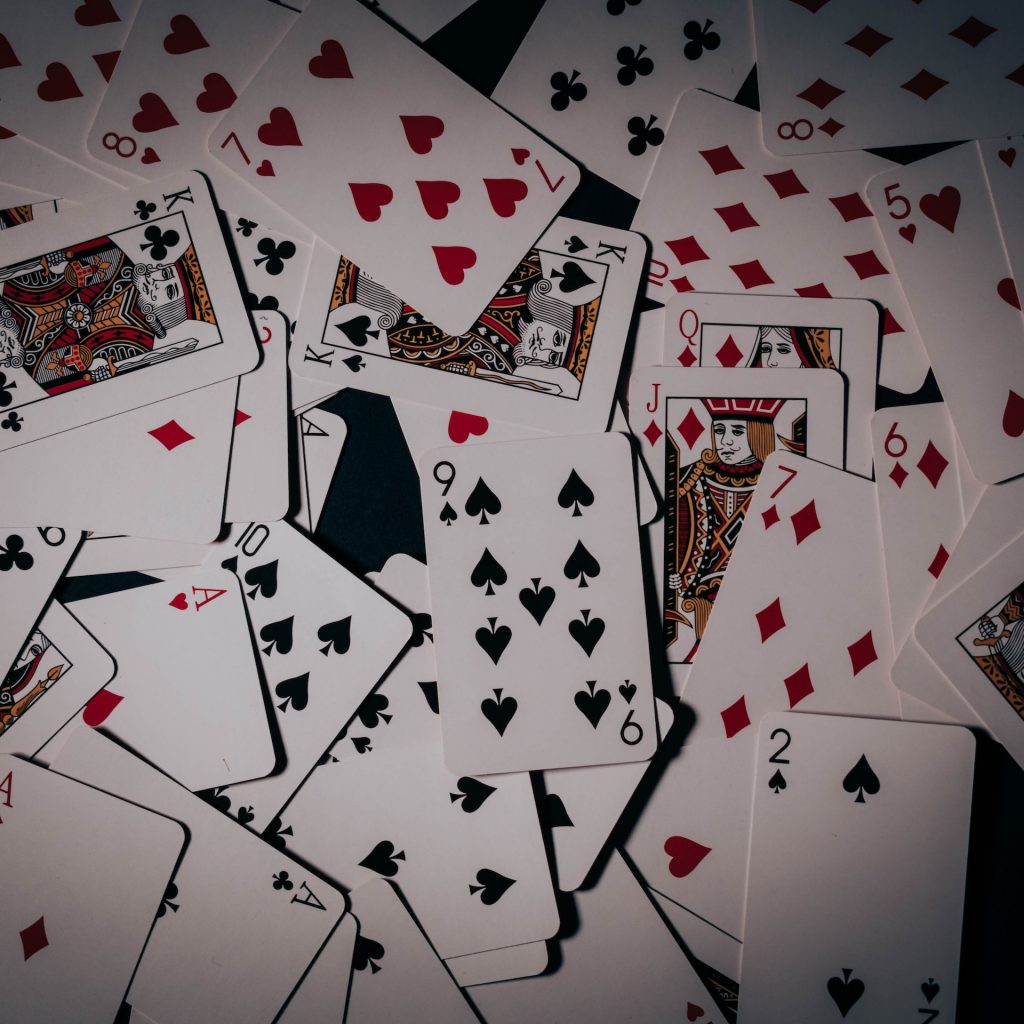Shuffling a deck of cards is a simple task, but it is one that is essential to many card games. A good shuffle ensures that the cards are in a random order, which is necessary for fairness and to prevent cheating.
There are many different ways to shuffle a deck of cards. Some of the most common methods include:
- The riffle shuffle: This is the most common way to shuffle a deck of cards. To riffle shuffle, the deck is split into two equal piles and then the cards from each pile are interleaved.
- The overhand shuffle: This is a less common way to shuffle a deck of cards. To overhand shuffle, the cards are held in one hand and then a few cards are released and placed on top of the deck. This process is repeated several times.
- The Hindu shuffle: This is a more complex way to shuffle a deck of cards. To Hindu shuffle, the deck is held in one hand and then the cards are moved in a circular motion. This process is repeated several times.
There is no one “best” way to shuffle a deck of cards. The best method for you will depend on your personal preference and the type of card game you are playing.
The Importance of Randomness
In card games, it is important for the cards to be in a random order. This is because it ensures that all players have an equal chance of winning. If the cards were not in a random order, it would be possible for one player to have an unfair advantage.
For example, if the cards were not in a random order, it would be possible for a player to know what cards were coming up next. This would give the player an unfair advantage, as they would be able to make better decisions about what cards to play.
The Science of Card Shuffling
The science of card shuffling is a complex and fascinating topic. Researchers have been studying the problem of card shuffling for centuries, and they have developed a number of mathematical models to describe the process.
One of the most important factors in card shuffling is the number of riffles. A riffle is a single pass of the cards, where the deck is split into two equal piles and then the cards from each pile are interleaved.
Researchers have shown that the number of riffles required to achieve a truly random order is seven. This means that if you riffle a deck of cards seven times, the cards will be in a random order with a very high probability.
Of course, the number of riffles required to achieve a truly random order will vary depending on the method of shuffling that is used. For example, the Hindu shuffle is more likely to produce a random order than the overhand shuffle.
The Art of Card Shuffling
Card shuffling is not just a matter of science. It is also an art form. There are many different ways to shuffle a deck of cards, and each method has its own unique style.
Some people prefer to use a simple method, such as the riffle shuffle. Others prefer to use a more complex method, such as the Hindu shuffle.
The best way to learn how to shuffle a deck of cards is to practice. There are many different tutorials available online that can teach you the basics of card shuffling.
With a little practice, you will be able to shuffle a deck of cards like a pro.
Conclusion
Card shuffling is a simple task, but it is one that is essential to many card games. A good shuffle ensures that the cards are in a random order, which is necessary for fairness and to prevent cheating.
There are many different ways to shuffle a deck of cards. The best method for you will depend on your personal preference and the type of card game you are playing.
With a little practice, you will be able to shuffle a deck of cards like a pro.




